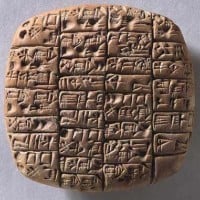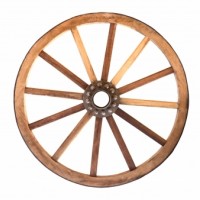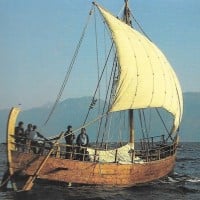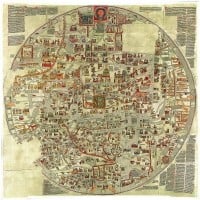Top 10 Most Influential Inventions from Mesopotamia
Mesopotamia is known as the cradle of civilization. It was the origin of agriculture where farming and irrigation was widespread, which made the region prosperous for civilization development. The lack of materials in the region was a major incentive for mesopotamians to think outside the box, thus creating some of the most important technologies we still have today. Sumer is considered one of the earliest civilizations along with Ancient Egypt that contributed significant discoveries, including laws and governance. Here, this list shows Mesopotamia's most significant inventions.
The ancient Sumerians invented the cuneiform script, which is the oldest form of writing in the world and the most important inventions to Sumerian civilization. The average Sumerian would use the script to write religious stories, folklore, or document business activities. The Epic of Gilgamesh is the oldest epic currently existing written in cuneiform which played a major role in religion and literature. This form was long used until the alphabetic script was widely preferred. It was eventually forgotten until it was rediscovered in the 19th century, with some of the texts deciphered. At this point it was realized that the script was important for understanding history and culture since it was an effective medium for communication and documenting information.

Since most inventions were inspired by some aspects of nature, the wheel was a unique invention out of most, hence why the wheel is considered one of the most important inventions as it marked the watershed moment that changed the course of human history. Although the invention of the wheel may be uncertain, the Sumerians were widely believed to have invented the wheel around 3500 BC, but it was mostly used as potter's wheels. Regardless it made transportation much easier without having to carry heavy things by hand. The ability to carry heavy loads in long distances was not only a huge impact in society but it had countless mechanical uses. Without it, most important modern inventions such as the car, train, and planes wouldn't exist.

While people used simple methods of mathematics, the Sumerians invented a more complex method called base 60. Because of it considered a composite number, number 60 is a very flexible number that consists of twelve factors which was especially used for measuring things such as time and angles, hence why the measurement of time originated from this complex system, which is widely used today. The base 60 was also used to make calculating small and large numbers easier. The Sumerians also invented the abacus which was important in performing basic math, and is still used by traders and merchants as of today. Additionally, the Sumer civilization was among one of the first civilizations to use geometry and to invent a model similar to the Pythagorean Theorem before the Greeks.

One of the most fundamentally used objects for basic hygiene. Although soap like materials were first made in Babylon, the making of soap was recorded back in 2500 BC in a Sumerian tablet in Girsu. In the past, soap was made by mixing various fats, salts, wood ash, and/or oils, but it was made by oils and wood ash in that time. Surprisingly, the soap wasn't used for hygienic purposes. Instead, the soap was mostly used for washing wool and fibers.

It's hard to pinpoint the year and location where beer was exactly invented. The Chinese people may be among the first one from archaeological evidence, but the first recipe of beer is more credited to the Sumerians. Barley beer was evidently produced in Mesopotamia from a poem praising Ninkasi, who was the goddess of beer. Beer played not only a major role in the average Mesopotamian's diet, but is enjoyed in festivals, and even was used to pay workers, as myth and literature shows.

The Game of Twenty Squares is the oldest board game that was believed to have been made over 4,600 years ago. It is also the very first strategy and race game to be invented. Composed of two sets of seven pieces, the goal was to move all their pieces to the end by rolling dices, which indicate how many spaces a player could move in that turn. If the player's piece happens to be placed on player 2's piece in the middle of the board, that piece will be captured. Players had to rely on luck in order to win. It was one of the most popular leisure activities in the region, so popular that the game had even spread into Sri Lanka and Crete.

Surprisingly, Western astronomy is originated from Mesopotamia. They used mathematics to track positions of the stars, planets, and our moon. MUL.APIN is a compendium that documents the rising and setting of the constellations. They were also one of the first peoples to create the lunisolar calendar consisting of twelve lunar months. Astrology also played a major role on astronomy due to the culture's religious connections with the gods and stars.

Mesopotania's civilizations resided near two great rivers called the Euphrates and the Tigris. Because they wanted to trade with other cities and states, the sailboat was constructed using wood and papyrus, with the sails being made out of linen. The sailboat was then used to navigate through rivers. It also played a role in military power since the sides were raised for archers to shoot their targets more accurately.

The usage of copper stretches back to the 9000 BC in the Middle East, but it was the Mesopotamians who made full use of the material about over 5000 years ago. With the mass production of copper, it was put into use for creating various weapons such as spears, to tools and objects such as chisels, jugs, and vessels. It also accelerated the growth of certain cities in Sumer, Uruk, etc.

Making bricks were a favorable thing among the Mesopotamians, and was one of the most used building materials even today in the Middle East. They made molds out of clay and water, which are then left out for the sun to harden then used for building projects. They were an excellent substitute to stone bricks considering that stone was a limited material back then.

The Sumerians were the first people to invent the law code, which is basically a collection of laws written in an organized manner. The code of your-Nammu is the oldest surviving law code as of today. Here are examples of the laws written in the code:
1. If a man commits murder, that man must be killed.
2. If a man commits robbery, he will be killed.
3. If a man commits a kidnapping, he is to be imprisoned and pay 15 shekels of silver
4. If a slave marries a slave, and that slave is free, he does not leave the household

Although many artifacts have been discovered, a few of them revolve in delineating city plans with precision. Some of the ancient maps are traced back into Mesopotamia, in the form of clay tablets, with the oldest being created from over 2300 BC.